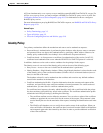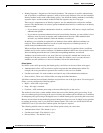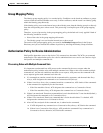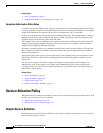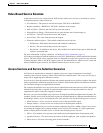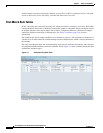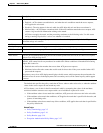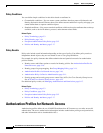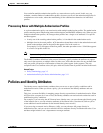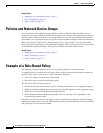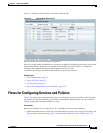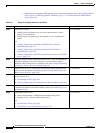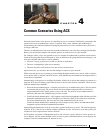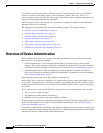
3-17
User Guide for Cisco Secure Access Control System 5.3
OL-24201-01
Chapter 3 ACS 5.x Policy Model
Policies and Identity Attributes
You can define multiple authorization profiles as a network access policy result. In this way, you
maintain a smaller number of authorization profiles, because you can use the authorization profiles in
combination as rule results, rather than maintaining all the combinations themselves in individual
profiles.
Processing Rules with Multiple Authorization Profiles
A session authorization policy can contain rules with multiple authorization profiles. The authorization
profile contains general information (name and description) and RADIUS attributes only. When you use
multiple authorization profiles, ACS merges these profiles into a single set of attributes. If a specific
attribute appears:
• In only one of the resulting authorization profiles, it is included in the authorization result.
• Multiple times in the result profiles, ACS determines the attribute value for the authorization result
based on the attribute value in the profile that appears first in the result set.
For example, if a VLAN appears in the first profile, that takes precedence over a VLAN that appears
in a 2nd or 3rd profile in the list.
Note If you are using multiple authorization profiles, make sure you order them in priority order.
The RADIUS attribute definitions in the protocol dictionary specify whether the attribute can appear
only once in the response, or multiple times. In either case, ACS takes the values for any attribute from
only one profile, irrespective of the number of times the values appear in the response. The only
exception is the Cisco attribute value (AV) pair, which ACS takes from all profiles included in the result.
Related Topics
• Policy Terminology, page 3-3
• Authorization Policy for Device Administration, page 3-11
Policies and Identity Attributes
The identity stores contain identity attributes that you can use as part of policy conditions and in
authorization results. When you create a policy, you can reference the identity attributes and user
attributes.
This gives you more flexibility in mapping groups directly to permissions in authorization rules. When
ACS processes a request for a user or host, the identity attributes are retrieved and can then be used in
authorization policy conditions.
For example, if you are using the ACS internal users identity store, you can reference the identity group
of the internal user or you can reference attributes of the internal user. (Note that ACS allows you to
create additional custom attributes for the internal identity store records.)
If you are using an external Active Directory (AD), you can reference AD groups directly in
authorization rules, and you can also reference AD user attributes directly in authorization rules. User
attributes might include a user’s department or manager attribute.



